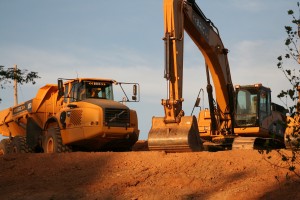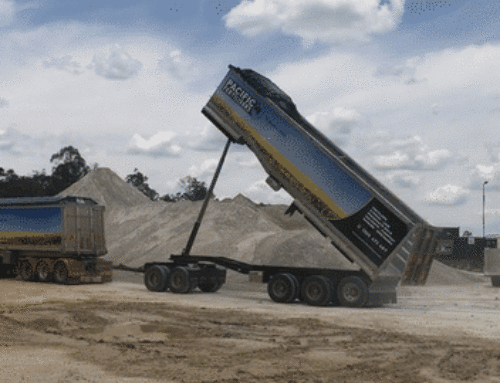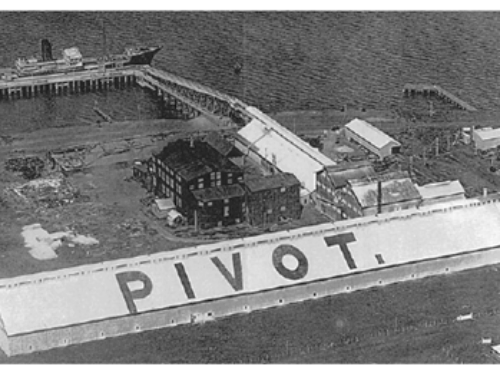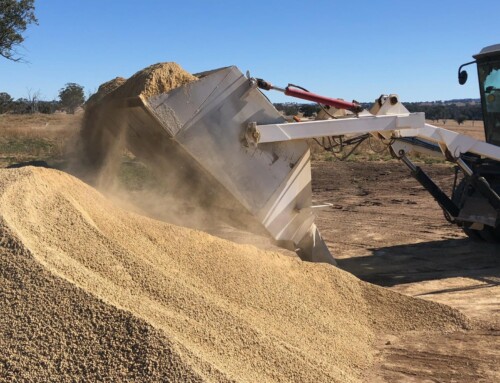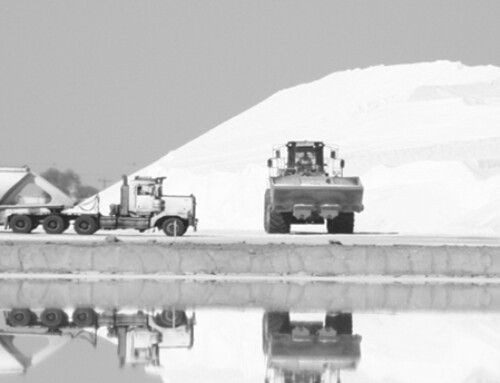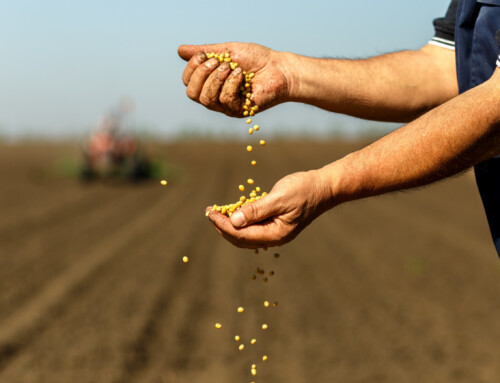Construction site problems with wet excavated material
If you’re excavating moist material, and are lacking room, sun or more rain is forecasted, then lime could be the answer.
Lime comes in many forms with the most common forms being Ag lime, hydrated lime and quick lime.
- Ag lime is generally used to adjust soil pH in the agriculture and acid sulphate soils in civil applications. It is much cheaper and easier to handle but has very little drying capability
- Quick lime or hydrated lime, can dry up wet soil quickly, so that it can be compacted readily, forming a working table that will resist further absorption of moisture. Quicklime and hydrated lime are both highly effective in drying wet clay and silt soils. Major civil contractors have found that thus use of these lime products can expedite construction in wet conditions or wet weather, due to the drying action. Quick lime has somewhat greater drying capacity and dries more rapidly than hydrated lime.
Application of the lime for most soil drying applications is at around 3 to 5% lime addition (based on dry weight of soil), depending on soil moisture content and mixed into a to a depth of 150-250mm. Use of lime for drying wet soil has three simple steps: 1 Lime spreading/application, 2 Mixing lime and soil together; and Compaction.
Quick Lime and Hydrated lime are available in bulk pneumatic tankers, Bulkbags or pallets of 25kg bags.
Safety Note: Because quicklime can cause burns, and hydrated lime can irritate skin and eyes, precautions should be taken when handling these products. Workers who handle, spread, and mix the lime should wear the correct PPE including tight fitting goggles, gauntlet gloves, long sleeves, and pants tucked into boots. Wash off all lime dust from skin as soon as practical, but in case of contact with eyes flush out with clean water immediately and see a doctor. Protective cream is suggested for those with sensitive skin. Proper dust inhalation precautions should also be taken. Please ensure you read the relevant product Material Safety Data Sheet (MSDS) for more details before use.
- Quicklime and Hydrated Lime are safe to use and handle when appropriate precautions are exercised.
- Quicklime and Hydrated Lime are strongly alkaline (in excess of pH12).
- Quicklime (Calcium oxide) is potentially more hazardous to use than Hydrated Lime due to its strong exothermic reaction in the presence of water (>80°C)
- Hydrated Lime (Calcium Hydroxide) like most chemicals in common use is not dangerous to work with, providing a few simple precautions are exercised.
- Quicklime and Hydrated Lime are classifed as Hazardous according to criteria of national occupational Health & safety Commission, australia (noHsC).
